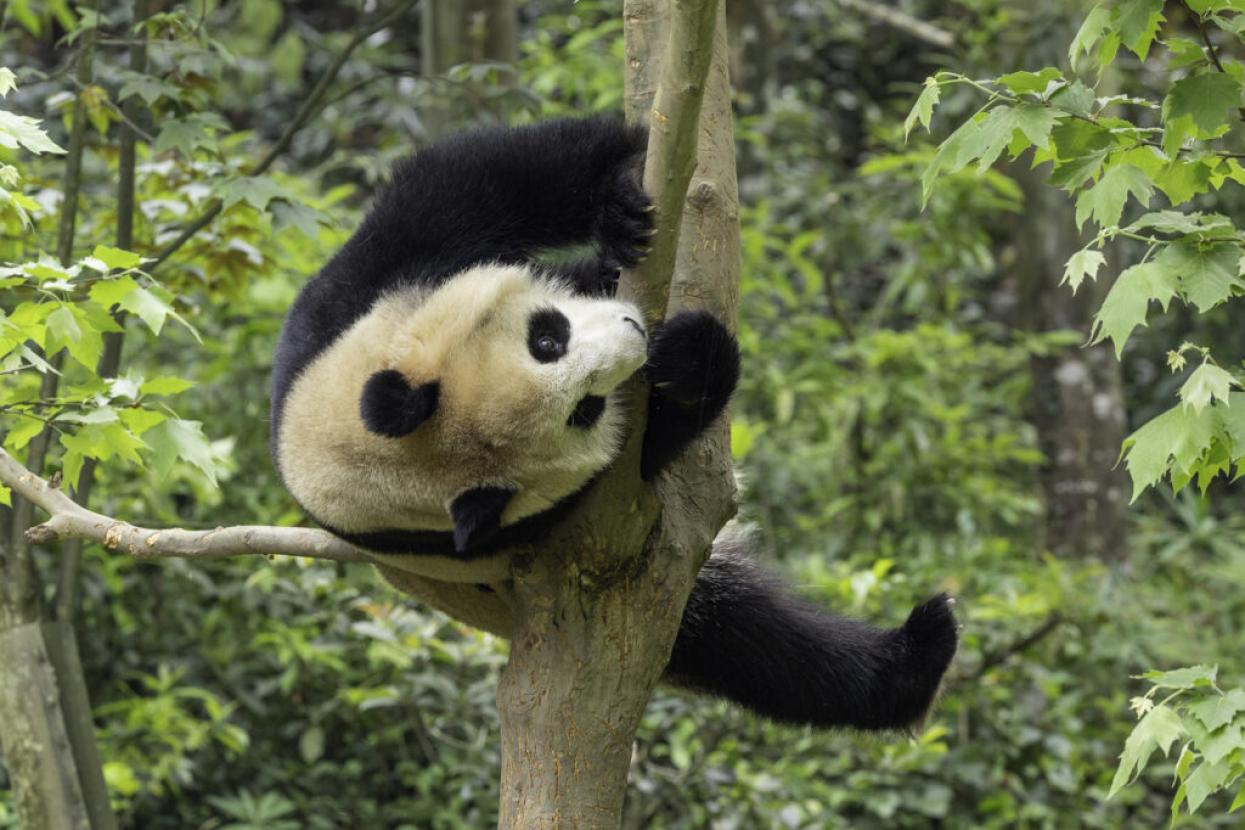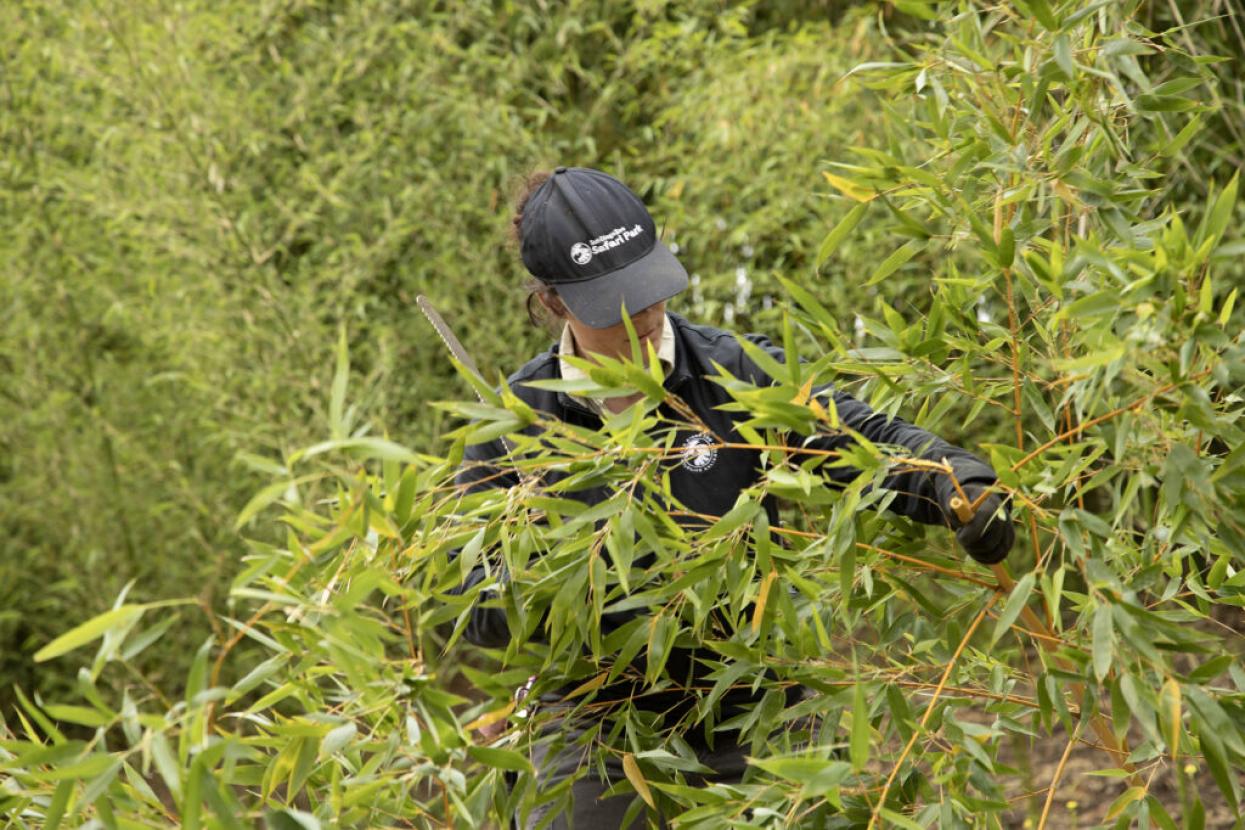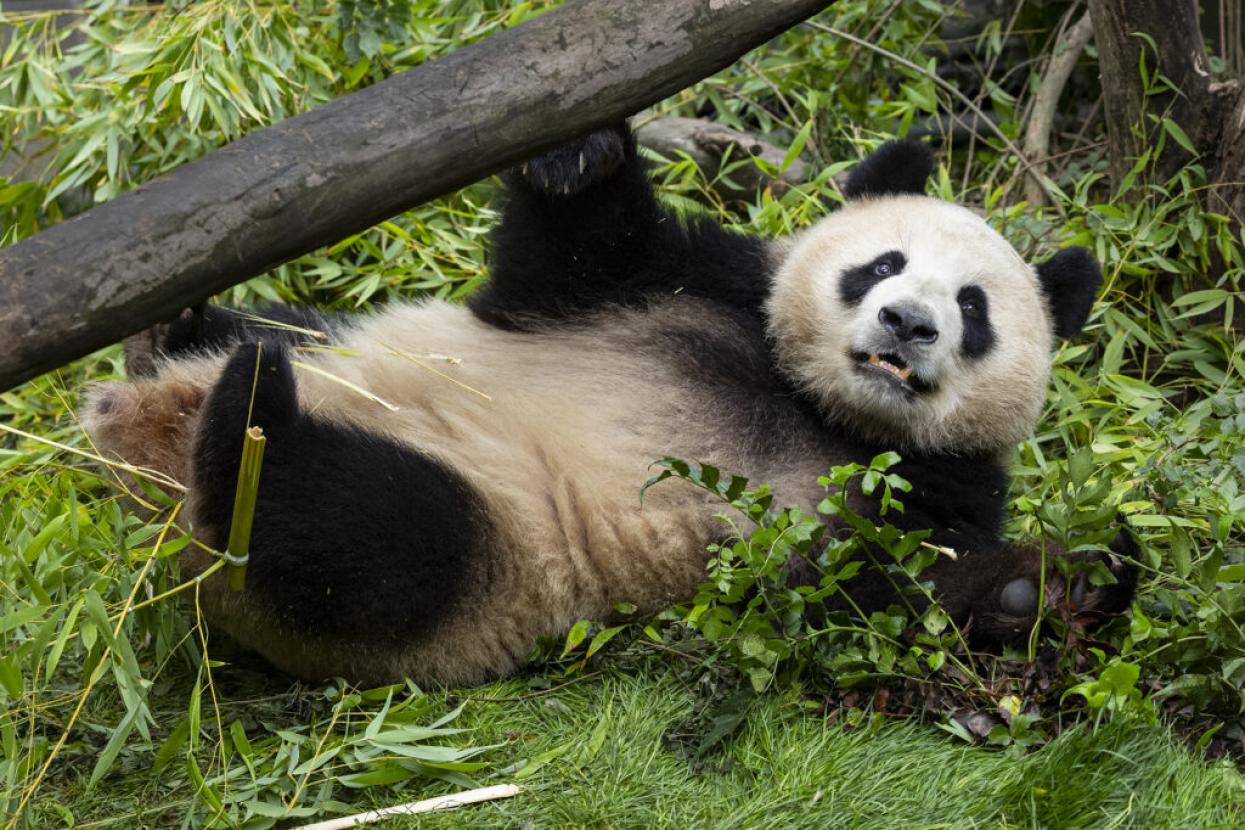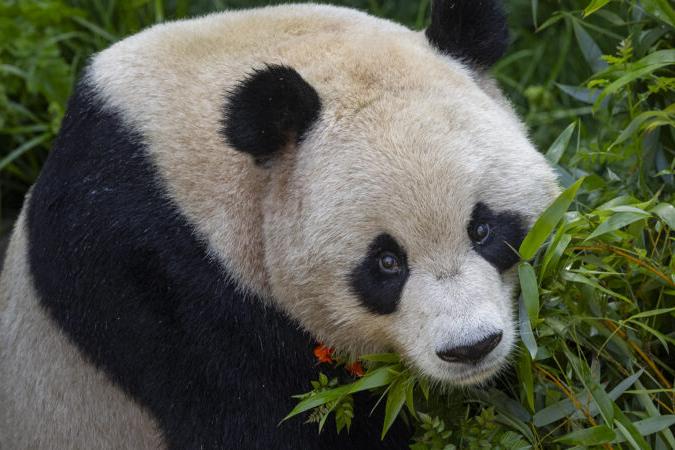
Helping Giant Pandas Thrive Is Job Number One
Something remarkable happens to people when they see a giant panda. With their peaceful aura, expressive faces, and lumbering and tumbling movements, giant pandas can look like a favorite black-and-white plush toy that has seemingly come to life as a full-size bear. No wonder they touch people’s hearts.
Caring for these much-loved bears is a privilege—and it is also a huge responsibility. Giant pandas truly are unlike any other bears, not just because of the effect they have on people, but also because of their unique care needs.
When giant pandas Xin Bao and Yun Chuan arrived at the San Diego Zoo this summer, a savvy team of wildlife care specialists was waiting for them. With a combined total of over 125 years of experience working with this and other bear species, giant panda team members were well prepared. These experts provide world-class care and an extraordinary commitment to the bears’ overall health and well-being.
Special Care for Special Bears
The characteristics that make pandas unique are part of what makes them so fascinating. For instance, while most bears growl and roar, pandas make more than 12 distinct sounds—including bleating like a goat, honking, huffing, and barking. Cubs may croak or squeal.
Many pandas are skilled climbers, and can make their way high up into some surprisingly tall trees.
Giant pandas sometimes do “handstands” to leave scent marks. A handstand gets a panda’s rear end farther up the tree so their scent mark will be higher and more noticeable to interested potential mates, as well as to rivals who will take it as a sign they’ve ventured too far into another panda’s territory. And while their scent-marking is designed to leave messages for possible panda mates, their reproductive window is very short, only a couple of days each year at most.
Pandas spend a lot of time each day—about 12 hours—eating their favorite food: bamboo. Having enough bamboo, of the right quality and the right species, is crucial.
Horticulturists grow and harvest fresh bamboo on grounds at the Zoo and the Safari Park, providing wildlife care specialists with 100 pounds every day for each giant panda at Denny Sanford Panda Ridge.
At the Zoo, wildlife care specialists supply each giant panda with about 100 pounds of fresh bamboo a day. It’s all grown here by our expert Horticulture teams on a total of 6 acres at the San Diego Zoo and the San Diego Zoo Safari Park. The bears are quite selective and choose each individual piece of bamboo they prefer, eating up to 40 pounds of it over the course of the day. They break and process the bamboo pieces themselves, just as they do in native ecosystems.
Wildlife care specialists work hand-in-hand with our Nutrition and Horticulture experts to satisfy the needs of giant pandas. They continually monitor consumption and make adjustments to ensure each panda’s overall health and well-being.
Throughout the day, wildlife care specialists also collect observational data on each panda and their behaviors. They monitor and adjust environmental elements such as temperature and moisture, maintain habitats, and encourage behaviors that allow giant pandas to voluntarily participate in their own health care. Those behaviors include positioning themselves to allow wildlife care specialists a thorough visual assessment or a routine health procedure, such as an abdominal ultrasound. This is made possible through trust-based relationships, which are carefully and diligently built with Wildlife Care teams.
Experiences and Outcome-Based Care
Giant pandas are incredibly dynamic animals living in complicated ecosystems, and their care reflects that. Outcome-based care—which we have implemented for wildlife at the Zoo and the Safari Park—will help facilitate the giant pandas’ expression of natural behaviors. A complete repertoire of behavioral expression is important for consideration when planning for future pandas to be reintroduced into native habitats.
Wildlife care specialists observe each panda’s individual behaviors, and foster opportunities for them to engage meaningfully with their environment, just as they do in native habitats.
Throughout the day, wildlife care specialists also collect observational data on each panda and their behaviors. The care we provide is based on a set of core principles that ensure every individual has opportunities to thrive, including a balanced diet, a safe and supportive physical environment, efficient and effective health care, and the ability to control and express species-specific behaviors. Wildlife care specialists foster opportunities for individuals to engage meaningfully with their environment, just as they do in native habitats.
In their native ecosystems, giant pandas rely on natural cues, such as seasonal changes, the length of the day, and changes in the amount of daylight. A particular scent in their habitat or a unique sound can also be a cue for using innate behaviors. Unique and reliable signals tell the bear what is going to happen or is not going to happen in their environment, so they can make a choice about their actions.
For example, during certain times of the year, bamboo shoots are more robust and easier to find—and environmental signals indicate they are coming. Teams will incorporate seasons and environmental signals into the pandas’ care, making their life season-dependent, just as in their native habitat.
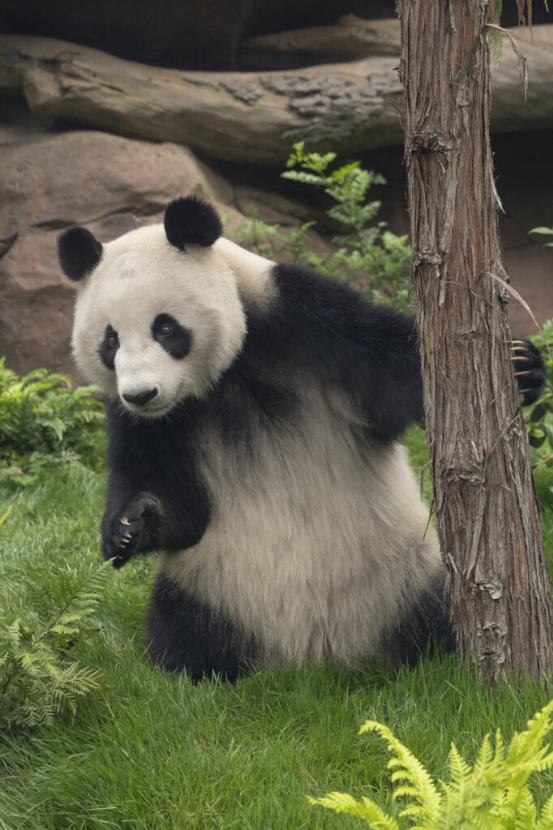
Giant pandas are incredibly dynamic animals living in complicated ecosystems, and their care at the San Diego Zoo reflects that.
So when you come to visit Xin Bao and Yun Chuan at Denny Sanford Panda Ridge, you can expect to see some of the familiar traits you might already associate with giant pandas. And as you watch them actively exploring their new habitats, keep an eye out for some of their other more subtle and intriguing natural behaviors too.
These new naturalistic habitats are four times larger than before and closely resemble their mountainous bamboo forest ecosystems in China, giving you a chance to experience giant pandas like never before. You’ll find them taking advantage of many new places for climbing, exploring, and foraging for food, including mature trees, large hillsides, and a variety of plants and grasses. Here, as in native ecosystems, the bears respond to seasonal stimuli, use innate species-specific behaviors, and make their own choices about activities they participate in.
San Diego Zoo Wildlife Alliance and China Wildlife Conservation Association, through our close collaborative partnership and friendship of 30 years, have transformed conservation—and the future—for this remarkable species. In the years ahead, our work will address vital issues of giant panda health and well-being, help prepare giant pandas for future translocations to their native habitats, develop new and emerging technologies for conservation strategies, and share insights to help conserve giant pandas and their fragile ecosystems. We are honored and excited to be part of this effort, and grateful to have you by our side along the way.
For the latest information on how and when to visit giant pandas at the San Diego Zoo, check out our Giant Panda FAQs. Zoo guests can secure a complimentary Giant Panda Timed Ticket or make reservations for a premium Early Morning with Pandas Walking Tour.

